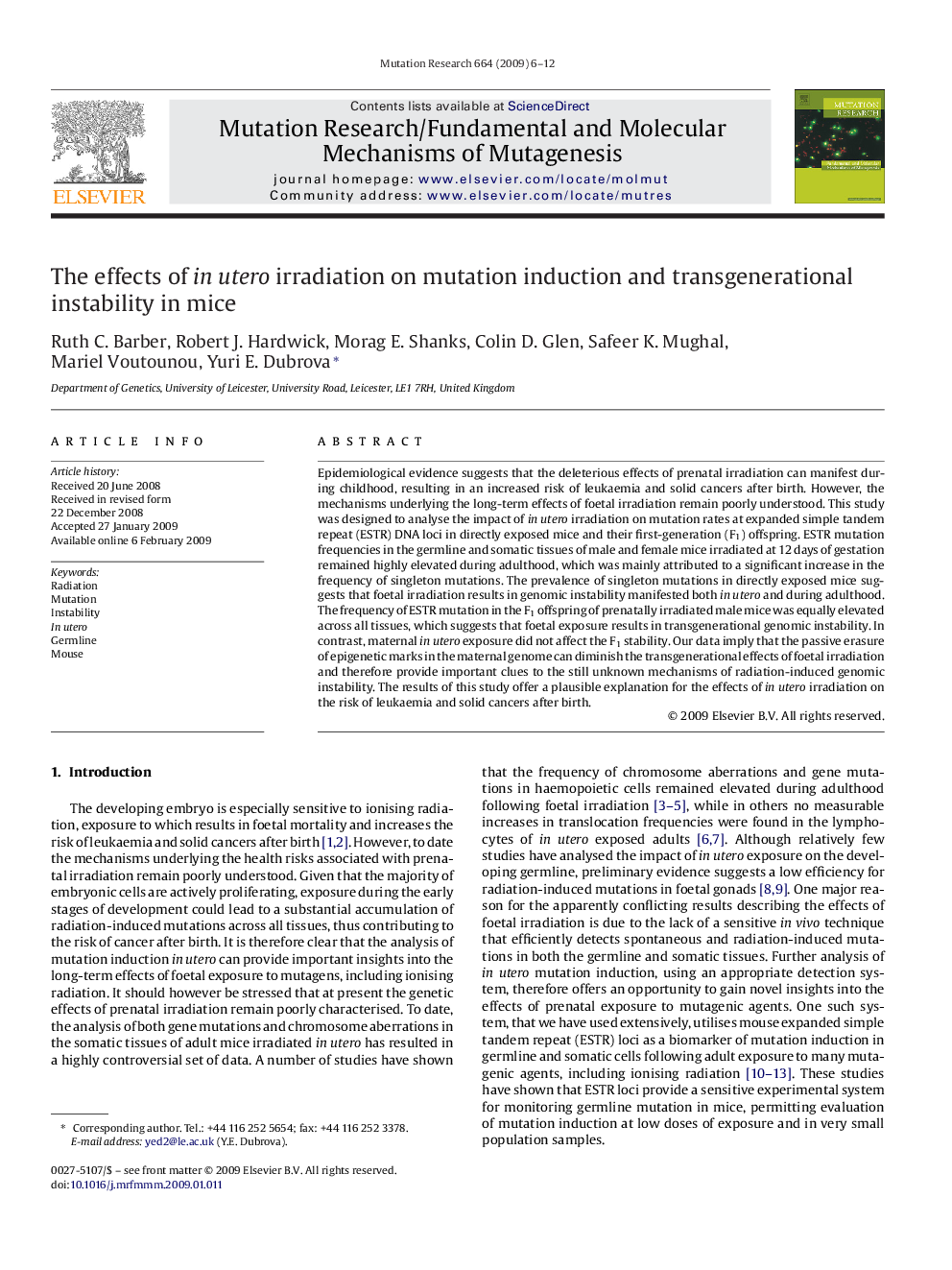| Article ID | Journal | Published Year | Pages | File Type |
|---|---|---|---|---|
| 2146989 | Mutation Research/Fundamental and Molecular Mechanisms of Mutagenesis | 2009 | 7 Pages |
Epidemiological evidence suggests that the deleterious effects of prenatal irradiation can manifest during childhood, resulting in an increased risk of leukaemia and solid cancers after birth. However, the mechanisms underlying the long-term effects of foetal irradiation remain poorly understood. This study was designed to analyse the impact of in utero irradiation on mutation rates at expanded simple tandem repeat (ESTR) DNA loci in directly exposed mice and their first-generation (F1) offspring. ESTR mutation frequencies in the germline and somatic tissues of male and female mice irradiated at 12 days of gestation remained highly elevated during adulthood, which was mainly attributed to a significant increase in the frequency of singleton mutations. The prevalence of singleton mutations in directly exposed mice suggests that foetal irradiation results in genomic instability manifested both in utero and during adulthood. The frequency of ESTR mutation in the F1 offspring of prenatally irradiated male mice was equally elevated across all tissues, which suggests that foetal exposure results in transgenerational genomic instability. In contrast, maternal in utero exposure did not affect the F1 stability. Our data imply that the passive erasure of epigenetic marks in the maternal genome can diminish the transgenerational effects of foetal irradiation and therefore provide important clues to the still unknown mechanisms of radiation-induced genomic instability. The results of this study offer a plausible explanation for the effects of in utero irradiation on the risk of leukaemia and solid cancers after birth.
